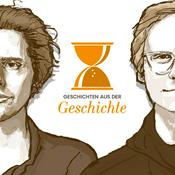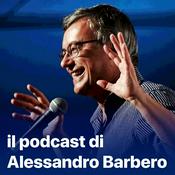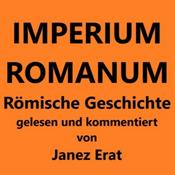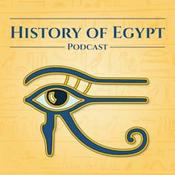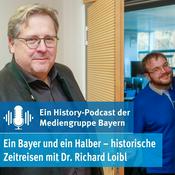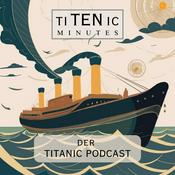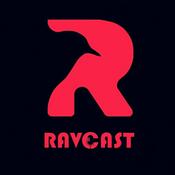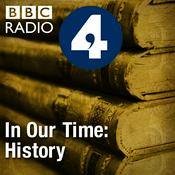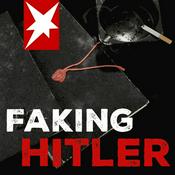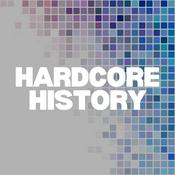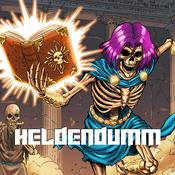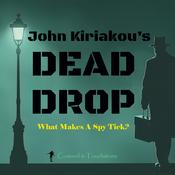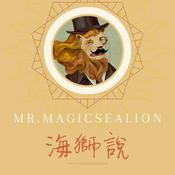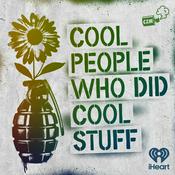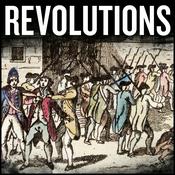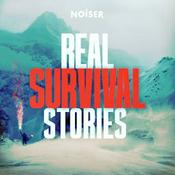2161 Episoden
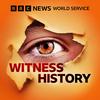
Tracey Emin’s unmade bed
07.1.2026 | 10 Min.
In 1999, Dame Tracey Emin’s unmade bed was nominated for Britain’s prestigious Turner art prize opening up conversations about how we define art.The installation titled, My Bed, was Dame Tracey’s bed surrounded by empty bottles and detritus.Dame Tracey said: “It’s like a time capsule of a woman from the '90s.”After eventually losing out on the Turner prize, she sold her piece for $200,000. She says: “The bed itself has become a national treasure of sorts”.Natasha Fernandes uses Dame Tracey’s 2024 interview with BBC 100 Women to tell the story of her famous artwork.Eye-witness accounts brought to life by archive. Witness History is for those fascinated by the past. We take you to the events that have shaped our world through the eyes of the people who were there. For nine minutes every day, we take you back in time and all over the world, to examine wars, coups, scientific discoveries, cultural moments and much more. Recent episodes explore everything from the death of Adolf Hitler, the first spacewalk and the making of the movie Jaws, to celebrity tortoise Lonesome George, the Kobe earthquake and the invention of superglue. We look at the lives of some of the most famous leaders, artists, scientists and personalities in history, including: Eva Peron – Argentina’s Evita; President Ronald Reagan and his famous ‘tear down this wall’ speech; Thomas Keneally on why he wrote Schindler’s List; and Jacques Derrida, France’s ‘rock star’ philosopher. You can learn all about fascinating and surprising stories, such as the civil rights swimming protest; the disastrous D-Day rehearsal; and the death of one of the world’s oldest languages.(Photo: Tracey Emin sat next to her unmade bed in 2014. Credit: Niklas Halle'n/AFP via Getty Images)

Isabel Allende: The House of the Spirits
06.1.2026 | 9 Min.
In 1982, Isabel Allende published her debut novel, The House of the Spirits. The characters are based on her family, and the story reflects Chile’s 20th Century history, including the 1973 military coup in which her relative, President Salvador Allende, was overthrown. The book began as a letter to her dying grandfather, but it grew into an epic multi-generational story. The House of the Spirits was an international bestseller and made Isabel one of the most renowned novelists in Latin America’s rich literary history. She speaks to Ben Henderson.Eye-witness accounts brought to life by archive. Witness History is for those fascinated by the past. We take you to the events that have shaped our world through the eyes of the people who were there. For nine minutes every day, we take you back in time and all over the world, to examine wars, coups, scientific discoveries, cultural moments and much more. Recent episodes explore everything from the death of Adolf Hitler, the first spacewalk and the making of the movie Jaws, to celebrity tortoise Lonesome George, the Kobe earthquake and the invention of superglue. We look at the lives of some of the most famous leaders, artists, scientists and personalities in history, including: Eva Peron – Argentina’s Evita; President Ronald Reagan and his famous ‘tear down this wall’ speech; Thomas Keneally on why he wrote Schindler’s List; and Jacques Derrida, France’s ‘rock star’ philosopher. You can learn all about fascinating and surprising stories, such as the civil rights swimming protest; the disastrous D-Day rehearsal; and the death of one of the world’s oldest languages.(Photo: Isabel Allende in 1986. Credit: Louis Monier/Gamma-Rapho via Getty Images)

The Hillsborough Disaster
05.1.2026 | 10 Min.
On 15 April 1989, there was a crowd crush at a football match in Sheffield, England, which led to the death of 97 fans. It was the semi-final of the FA Cup between Liverpool and Nottingham Forest and the worst sporting disaster in UK history.Rachel Naylor speaks to Jenni Hicks, whose daughters died in the disaster.This programme contains distressing details. Eye-witness accounts brought to life by archive. Witness History is for those fascinated by the past. We take you to the events that have shaped our world through the eyes of the people who were there. For nine minutes every day, we take you back in time and all over the world, to examine wars, coups, scientific discoveries, cultural moments and much more. Recent episodes explore everything from the death of Adolf Hitler, the first spacewalk and the making of the movie Jaws, to celebrity tortoise Lonesome George, the Kobe earthquake and the invention of superglue. We look at the lives of some of the most famous leaders, artists, scientists and personalities in history, including: Eva Peron – Argentina’s Evita; President Ronald Reagan and his famous ‘tear down this wall’ speech; Thomas Keneally on why he wrote Schindler’s List; and Jacques Derrida, France’s ‘rock star’ philosopher. You can learn all about fascinating and surprising stories, such as the civil rights swimming protest; the disastrous D-Day rehearsal; and the death of one of the world’s oldest languages.(Photo: Tributes laid in memory of those who died at Hillsborough. Credit: Liverpool FC via Getty Images)

South Africa's luxury train
02.1.2026 | 10 Min.
In 1986, South African businessman Rohan Vos was sitting in the bath when he decided to pursue his passion and launch a vintage railway business. However, the venture nearly bankrupted him, and he was forced to sell his family home. But, improved economic conditions in the 1990s and a chance encounter with a travel agent in London saved the business. Rovos Rail is now regarded as one of the most luxurious trains in the world, and carries passengers all over the southern half of Africa. Rohan Vos looks back on the story with Ben Henderson.Eye-witness accounts brought to life by archive. Witness History is for those fascinated by the past. We take you to the events that have shaped our world through the eyes of the people who were there. For nine minutes every day, we take you back in time and all over the world, to examine wars, coups, scientific discoveries, cultural moments and much more. Recent episodes explore everything from the death of Adolf Hitler, the first spacewalk and the making of the movie Jaws, to celebrity tortoise Lonesome George, the Kobe earthquake and the invention of superglue. We look at the lives of some of the most famous leaders, artists, scientists and personalities in history, including: Eva Peron – Argentina’s Evita; President Ronald Reagan and his famous ‘tear down this wall’ speech; Thomas Keneally on why he wrote Schindler’s List; and Jacques Derrida, France’s ‘rock star’ philosopher. You can learn all about fascinating and surprising stories, such as the civil rights swimming protest; the disastrous D-Day rehearsal; and the death of one of the world’s oldest languages.(Photo: Rohan Vos. Credit: David Lefranc/Gamma-Rapho via Getty Images)

The American Freedom Train
01.1.2026 | 9 Min.
In April 1975, the American Freedom Train set out on a tour across the United States to celebrate 200 years of American independence.On-board were more than 500 priceless artefacts, documenting important moments in America's history - including an original copy of the Constitution, Thomas Edison's first working light bulb and a NASA lunar rover.Over the next 21 months, seven million people visited the travelling museum as it made its epic journey around 48 states. Jacqueline Paine speaks to former train security guard Lou Nelson, about taking America's history to the people, as the country prepares to celebrate its 250th anniversary. Eye-witness accounts brought to life by archive. Witness History is for those fascinated by the past. We take you to the events that have shaped our world through the eyes of the people who were there. For nine minutes every day, we take you back in time and all over the world, to examine wars, coups, scientific discoveries, cultural moments and much more. Recent episodes explore everything from the death of Adolf Hitler, the first spacewalk and the making of the movie Jaws, to celebrity tortoise Lonesome George, the Kobe earthquake and the invention of superglue. We look at the lives of some of the most famous leaders, artists, scientists and personalities in history, including: Eva Peron – Argentina’s Evita; President Ronald Reagan and his famous ‘tear down this wall’ speech; Thomas Keneally on why he wrote Schindler’s List; and Jacques Derrida, France’s ‘rock star’ philosopher. You can learn all about fascinating and surprising stories, such as the civil rights swimming protest; the disastrous D-Day rehearsal; and the death of one of the world’s oldest languages.(Photo: Local people in Archbold, Ohio queue to see the American Freedom Train, June 1975. Credit: AP)
Weitere Geschichte Podcasts
Trending Geschichte Podcasts
Über Witness History
Höre Witness History, Der Rest ist Geschichte und viele andere Podcasts aus aller Welt mit der radio.de-App

Hol dir die kostenlose radio.de App
- Sender und Podcasts favorisieren
- Streamen via Wifi oder Bluetooth
- Unterstützt Carplay & Android Auto
- viele weitere App Funktionen
Hol dir die kostenlose radio.de App
- Sender und Podcasts favorisieren
- Streamen via Wifi oder Bluetooth
- Unterstützt Carplay & Android Auto
- viele weitere App Funktionen


Witness History
App laden,
loshören.




